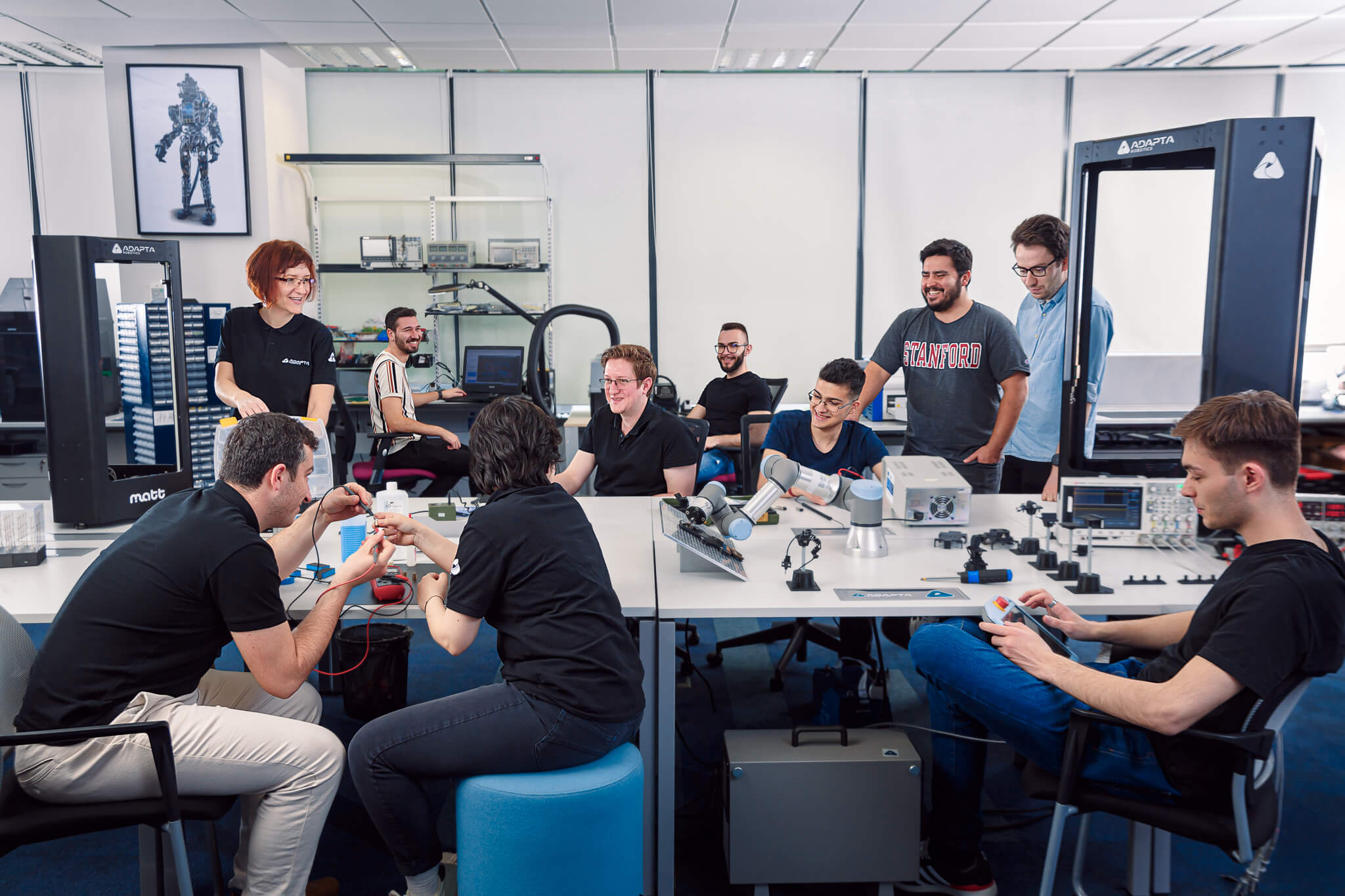
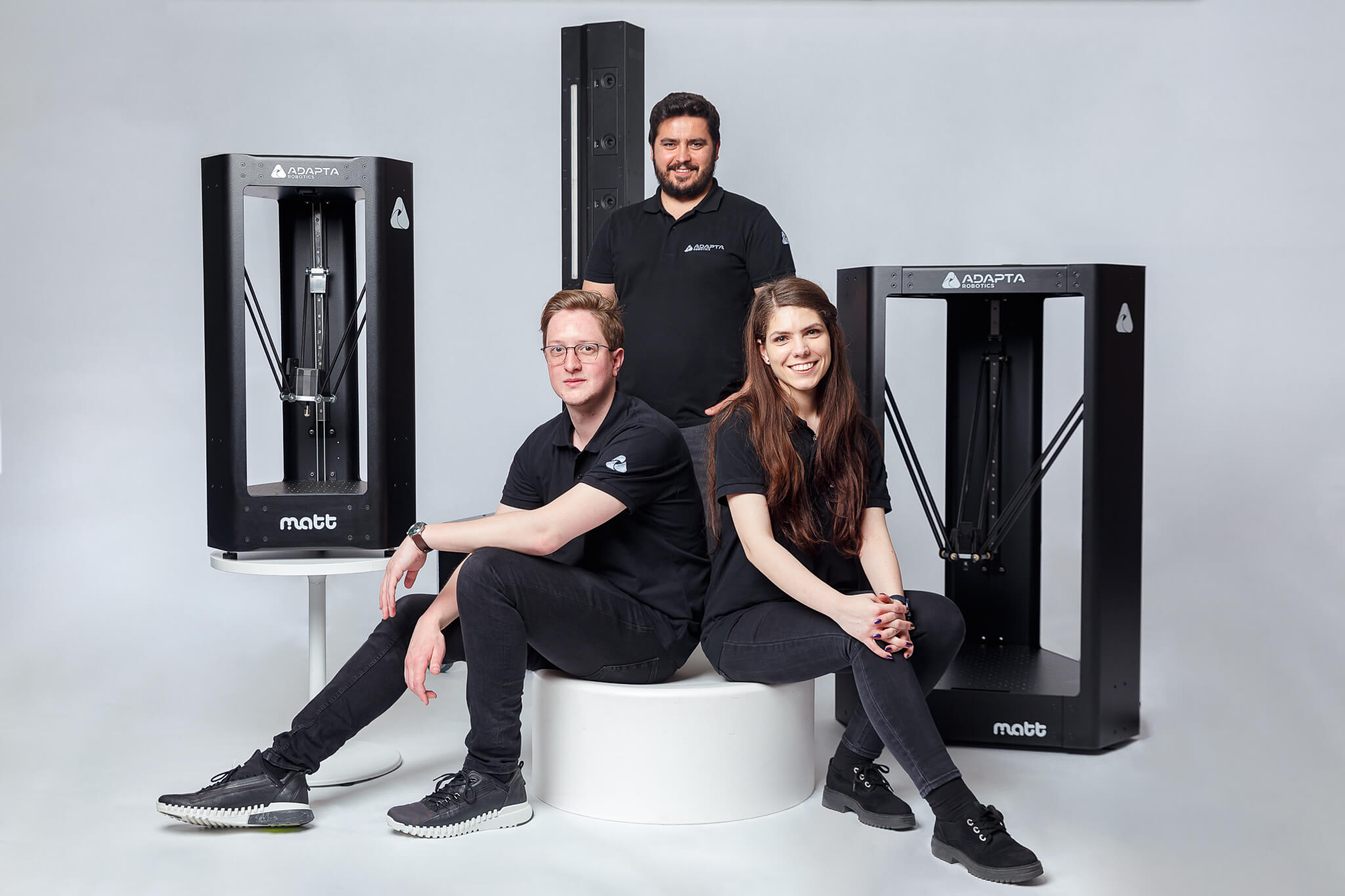
The idea, vision and principles behind Adapta Robotics matured over years, first in academia and academic robotics contests, then under RinfTech as the robotics department. While being the same determined and invested people that started working on competition robots almost 10 years ago, naturally, we reached a point where we were driven towards new challenges and experiences. So, we decided to launch Adapta. Building on our background, we aim to find new approaches and perspectives to complex problems, while keeping the same passion and enthusiasm.
Our mission is to build robots from the ground up, designing and customizing them to fit pain points and scenarios, while offering support and keeping an open communication with our customers.
We are guided by the vision of supporting businesses and people reach their full potential by using our robots as a customizable advantage and bringing efficiency to their monotonous tasks.
Adapta Robotics is founded on the motivation to design, develop and build all robotic products from scratch, offering the undebatable advantage of adapting and improving them whenever necessary, to seamlessly integrate into a team or process. Our goal being to deliver high quality products and services, we think, plan and prototype, iterate, analyze, and improve, always aspiring to be better and do better.
We always keep an open communication, hearing your needs, feedback and opinion, offering our advice and support, all being essential to the process of adapting our robotic products to your problem and automation requirements. We offer exactly what you need, not burdening you with complexities that impress but are counterproductive.
As a robotics team during university years, we were united by the drive to create, learn, improve and be competitive in a field which made sense and felt natural and challenging for us, but which was still in its infancy in the real world: robotics.
Learning, developing, and building the base that today stands at Adapta’s principles, mission, vision, and values.
Learning, developing and building the base that stands at what was going to be Adapta’s principles, mission, vision and values: we learnt that there must be no compromise when it comes to the components inside a robot, that innovation is the path to take when you find yourself limited by what is around you or by tools and frameworks that you work on/with. Only through practice you can aim to achieve perfection; improvement and learning needs to be continuous, no matter your level of experience or expertise. For this reason, we engaged in various R&D projects focusing on mobile robots.
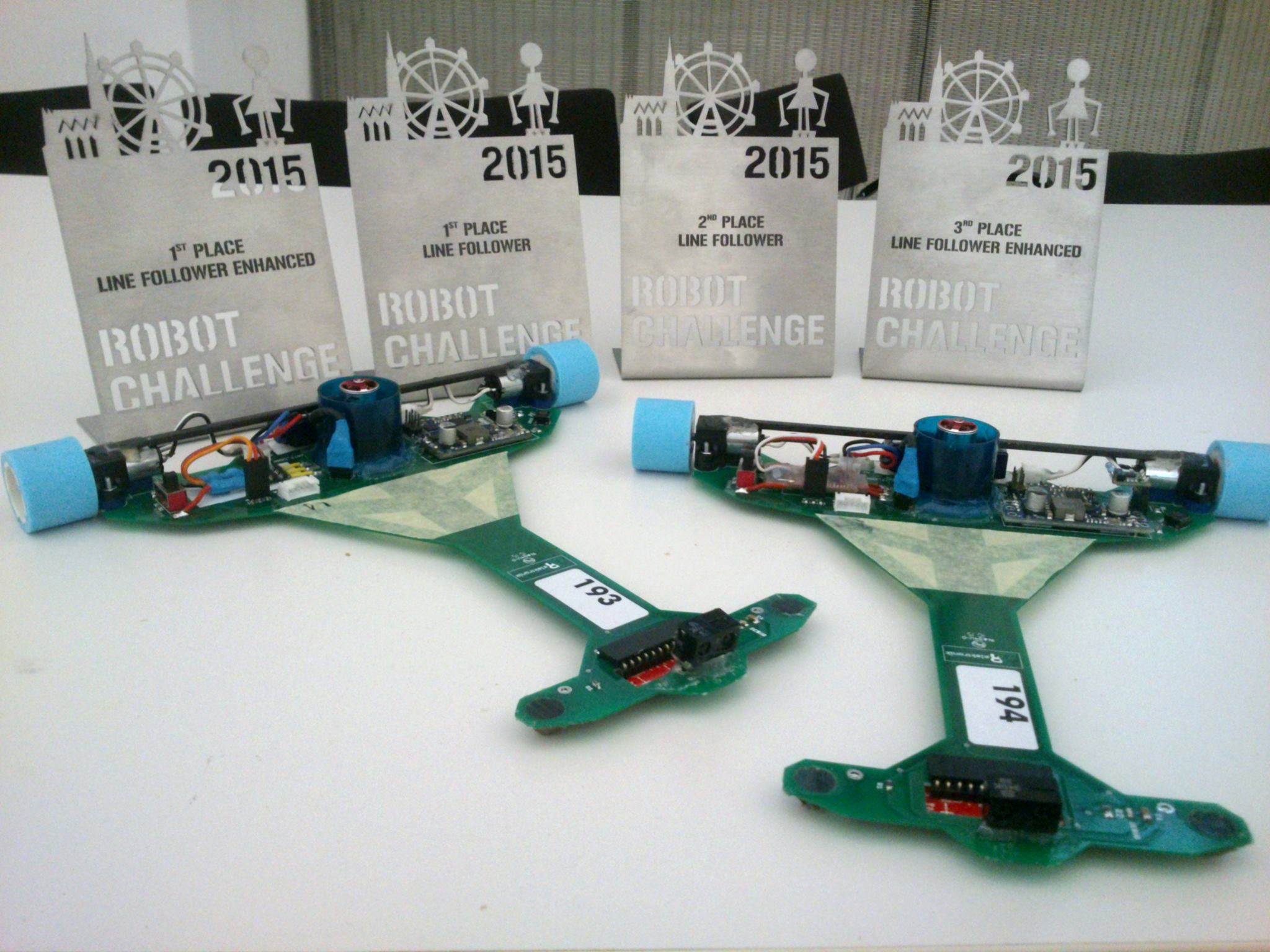
Building on our common principles, what is today known as Adapta Robotics was starting to take shape. The robotics team won the biggest robotics competition in Europe at that time, Robochallenge Vienna. At the same time, to start developing MATT, we wrote a request for EU Funding.
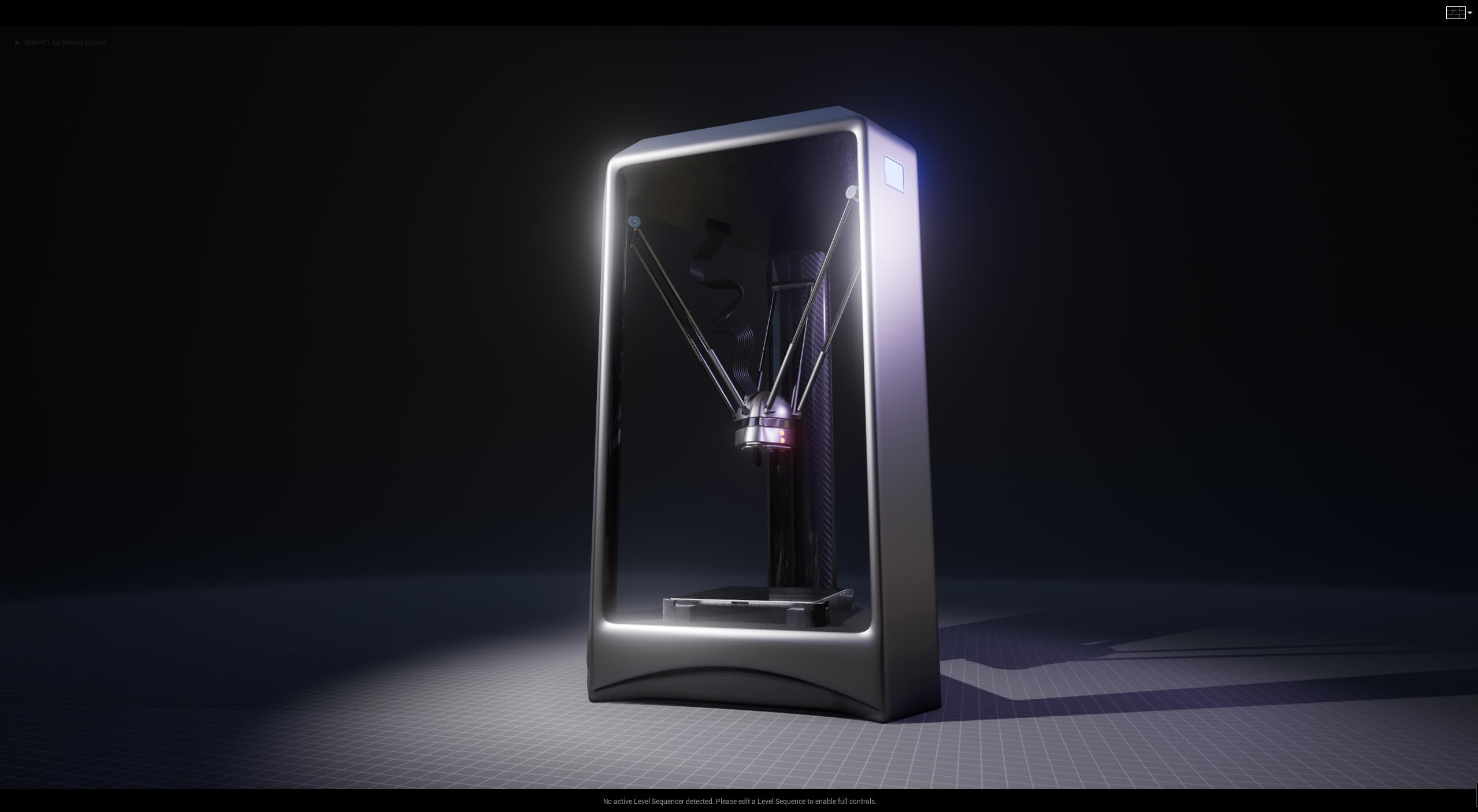
2016 was the year when we focused on the development of both MATT and our university contest robots. The improvements brought to the contest robots resulted in winning more competitions all around the world. Continuously wanting to perform, we started designing prototypes for self- driving cars, experience that brought us new work perspectives and expertise. Still, our biggest accomplishment of the year was creating the first MATT prototype.
Rinftech’s robotics department and the first MATT prototype.
Rinftech’s robotics department: our beginning was modest, as a small department specialized in robotics and hardware solutions.
MATT prototype: MATT was the first project we started developing. Through an EU grant, we made MATT into a ready for market product, allowing us to explore potential markets, identify needs of diverse industries and propose solutions for testing problems across those industries.
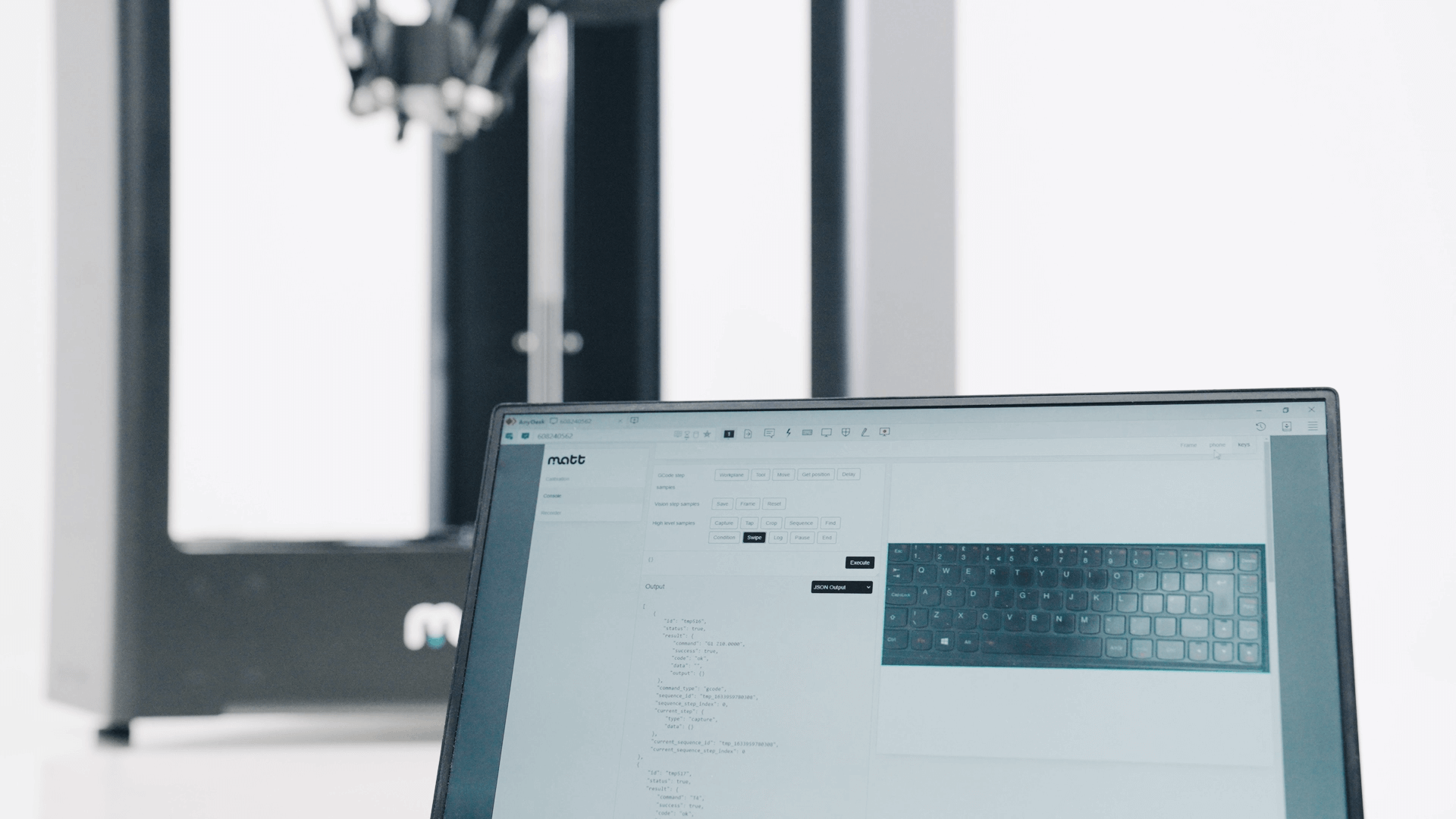
To give MATT the capabilities it has today, we constantly and consistently worked on improving it. We enhanced its software suit by adding a user-friendly graphical user interface and new computer vision methods that allowed MATT to perform on new use-case grounds.
Developing MATT Standard, International conferences, certifications and first customers.
Matt Standard took shape: we focused on developing use cases and our software suite, strengthening and simplifying the way to interact with the robot.
This was the year when MATT made its appearance in an international conference at the Embedded World. Soon to follow was MATT’s CE Certification. We realized all our efforts were paid when MATT’s first customer came from the US, and shortly after, followed by another one from the EU.
Realizing first MATT customizations and developing MATT Extended, while expanding its industry coverage.
MATT Extended: the development of MATT’s extended version began when we identified the need to test wider screens and devices.
First MATT customization: we adapted MATT to be ready for the gaming industry, to test gaming consoles and interact with handheld joysticks.
Industry coverage: developing both from identifying needs and bringing the necessary customizations to meet them, we tackled and gained insight on various industries, such as automotive, device testing, gamin, R&D, manufacturing, aerospace, wearables.
Building Adapta Robotics we strive to Improve ourselves, be consistent in our path and grow organically.
Building Adapta Robotics: we are not going to hide it, we struggled a lot to find a name that accurately depicts our values and competencies. But eventually it all made sense: we are Adapta because we can shift easily from challenge to challenge, because it is in our core to find solutions to engineering problems (and not only) and because we strive to improve/ perfect ourselves, be consistent in our path and grow organically.
Retail needs and developing ERIS: after discovering the necessity of a more efficient way of scanning the shelves inside a retail store, we developed the Effective Retail Intelligent Scanner, in its prototype state a non-autonomous robot, easy to handle, that allows in store price tag and inventory issues to be solved on the spot.
MATT Adapt: as MATT started covering more and more industries it became obvious that the delta design of the Standard and Extended models was not sufficient for certain use-cases. With this in mind, MATT Adapt came to life by integrating the already existent MATT software suit with a six degree of freedom robotic arm.
The university robotics competition team celebrated 100 prizes won in international and national competitions.
Adapta becomes an independent brand, designing and manufacturing robotic solutions that are cutting edge and aligned with the technologies of tomorrow.
Adapta as a brand: our purpose is to design and manufacture robotic solutions that are cutting edge, aligned with the technologies of tomorrow, that deliver results and performance. We are following our clients’ needs and interests and we are keen to bring our knowledge acquired in years of robotic development to bring a new perspective and enhance human potential.
In store scanning with ERIS: to improve the way ERIS works and bring its scanning capabilities to the next level, we performed scanning sessions in a retail store, with real- world conditions (on the store’s shelves, products and price tags, operated by store staff, with shoppers roaming around etc.).
USA and EU roadshow and live demos: wanting to be as close as possible to customers and potential customers, and to bring awareness over who Adapta is and what our products represent, we packed MATT and started a roadshow, first in US then EU. This allowed us to perform live demos and to have our team ready to assist with adapting MATT to different work environments, testcases and DUTs.